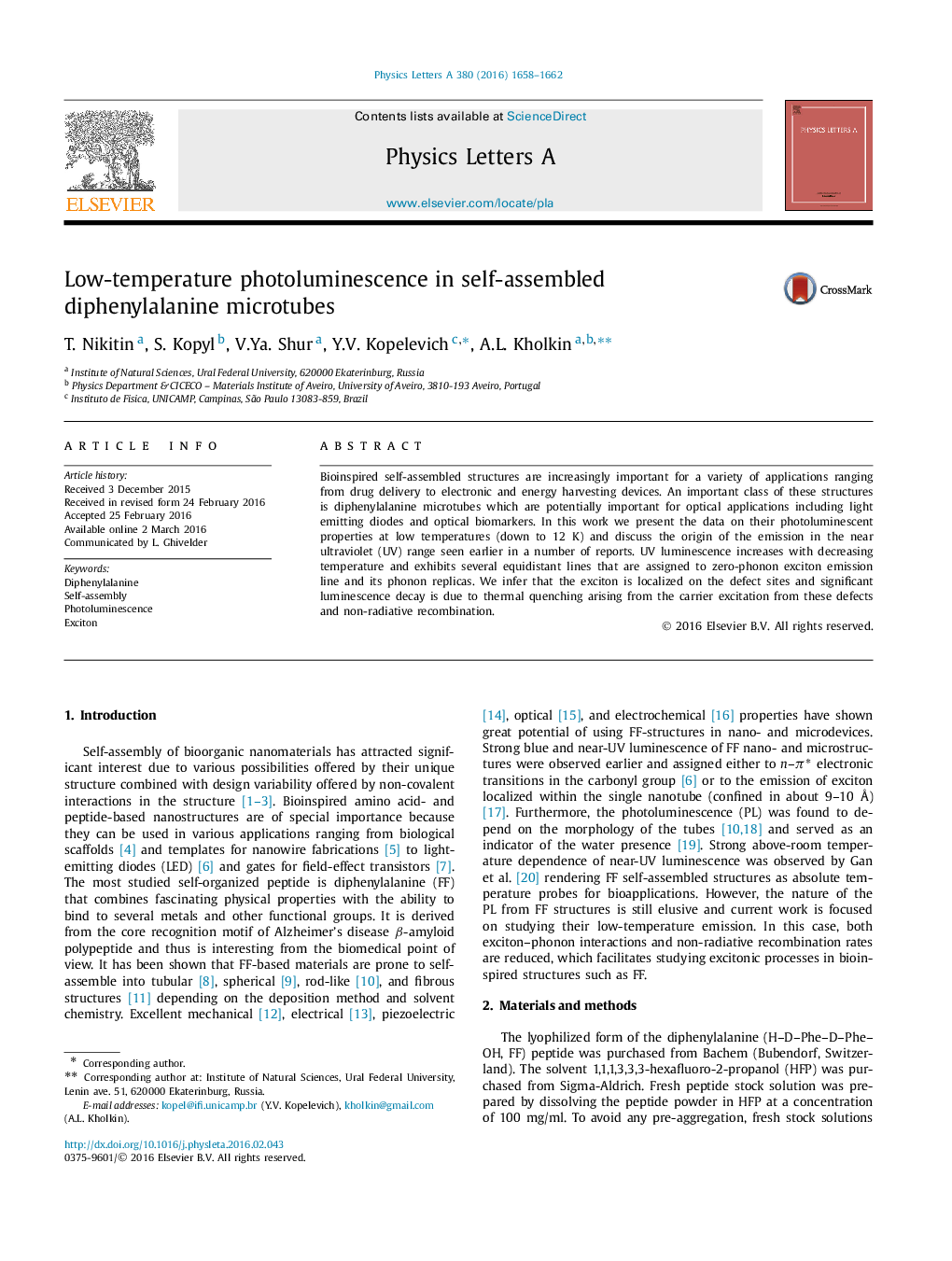| Article ID | Journal | Published Year | Pages | File Type |
|---|---|---|---|---|
| 1860595 | Physics Letters A | 2016 | 5 Pages |
•Low-temperature luminescence is studied in bioinspired self-assembled FF peptide microtubes.•The mechanism of the optical emission is assigned to the luminescence of excitonic states localized at defects.•Luminescence in FF microtubes can be used as an absolute temperature probe at low temperature.
Bioinspired self-assembled structures are increasingly important for a variety of applications ranging from drug delivery to electronic and energy harvesting devices. An important class of these structures is diphenylalanine microtubes which are potentially important for optical applications including light emitting diodes and optical biomarkers. In this work we present the data on their photoluminescent properties at low temperatures (down to 12 K) and discuss the origin of the emission in the near ultraviolet (UV) range seen earlier in a number of reports. UV luminescence increases with decreasing temperature and exhibits several equidistant lines that are assigned to zero-phonon exciton emission line and its phonon replicas. We infer that the exciton is localized on the defect sites and significant luminescence decay is due to thermal quenching arising from the carrier excitation from these defects and non-radiative recombination.
